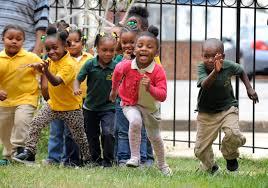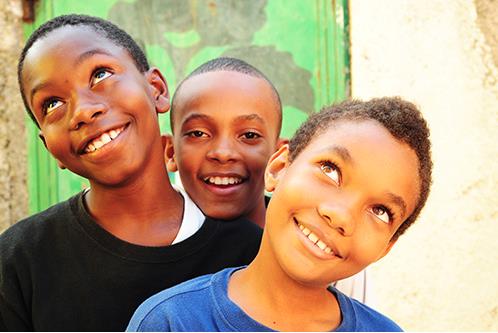WE MUST HELP THE POLICE SAVE LIVES –
Part 4 Our Children
Communities, families, laws, entire cultures do everything they can to protect children from the harsh world. In fact, without fear of successful contradiction I can say the one link that all cultures throughout the world have in common is the systemic goal of protecting children. Children are often viewed through the lens of innocence and viewed as needing to be protected. If you think about it, children are often forgiving for minor indiscretion because after all they are children.
Emergency Situations Involving Children
Even in emergency situations involving children, the circumstances are often viewed as more of an emergency or a greater emergency. Both maternal and paternal instincts go into super drive even if the child is not yours- “It is still an innocent child”.
We even see this manifest itself in emergency departments as well. For instance, I was working a Saturday evening in a rural emergency department. The paramedics called on the radio to let the emergency department team to let us know that they were bringing in a patient who was found at the bottom of the pool with an unknown submersion time. “The female patient was blue and had no pulse on arrival at the scene”. I could hear a few members of the emergency department team ask, “Why don’t they pronounce her at the scene?” (meaning, declare the patient dead at the scene and transport the patient to the morgue instead of the emergency department). Under the appropriate circumstances this is a common practice, but there was not enough information given to even make that type of assessment.
The paramedic ended the call with “I forgot to mention, the patient is a 9 year old girl”. The tone and mood of the emergency department team instantly changed, becoming surreal in seconds. The incoming patient suddenly became everyone’s child, daughter, niece or granddaughter under this heightened sense of urgency.
We prepared the resuscitation room. A few minutes later the paramedics rushed in with the patient. As I began to lead the code and thus call out medical orders to the ER team I could hear the comments, “She’s so young…. she’s so innocent…. poor baby”. The room was moving so fast, yet there was a certain quiet, dread and lurking terror in the resuscitation room.
Meet Martha
I will name this patient Martha. On arrival Martha had a faint pulse, an undetectable blood pressure and was not taking any spontaneous breaths. We initiated Advanced Cardiac Life Support, ACLS. We gave lifesaving IV medicines to help with her heart and blood pressure. We placed a tube in her mouth (intubation) so that we could breathe for her. After a few minutes Martha had a stronger pulse and a blood pressure of 60/40. She was critically sick and in danger of imminent death.
I immediately called the closest children’s trauma medical center and discussed the case with their pediatric critical care physician who immediately assisted over the phone. He gave extremely helpful advice and when we got off the phone he said, “Our helicopter should be landing at your hospital as we speak to transport the patient to the children’s center.”
The paramedic team responded with an even higher level of urgency. The entire emergency department immediately dropped their tasks so everyone could help this child. The receiving hospital immediately diverted resources in addition to the helicopter they’d already sent. Why did all these entities increase their emergency/urgency threshold? In the interest of trying to save and protect a child. This is what the world does. We protect and save children!

But does this mean all children? I am confident that from the medical perspective the answering is a resounding yes, all children. However, in other arenas this may not be the case.
Are All Children Viewed Equally?
In the academic paper “The Essence of Innocence”, published in the Journal of Psychology and Social Pathology in 2014, the results showed that Blacks and especially Black boys routinely are not given the protections of child that are afforded to their white counterparts. In fact, the authors go on to highlight that Blacks are perceived as older than their White peers by an average of 4.6 years. The phenotypic overestimation of age prediction of Black children leads to a decrease in perception of Black children’s innocence, and therefore less of a need to be protected. In short, because the Black child looks older they are viewed as less innocent.
The overestimation of the child’s age leads to the child being treated like an adult. The impact of this horrific overestimation is highlighted within the criminal justice system.
- ……. “Relative to peers sent to juvenile facilities, children who are sentenced as adults are twice as likely to be assaulted by a correctional officer, five times as likely to be sexually assaulted, and eight times as likely to commit suicide. These outcomes are particularly worrisome for Black children, who are 18 times more likely than White children to be sentenced as adults and who represent 58% of children sentenced to adult facilities.”
There is no scientific evidence that Black children are more violent than their White peers. So why are Blacks “18 times more likely to be sentenced as adults”? I would opine that as a result of the system viewing the Black child as older, it will then treat them as adults.
Yes, I know there are many important and significant historical and social factors to consider. But in the interest of getting our children Home Alive, especially Black boys, we must use this information in practical ways to meet our goal. Without minimizing all the factors at play, I can simultaneously highlight the goal to get our children home safely. I would highly encourage everyone to read the full article https://www.apa.org/pubs/journals/releases/psp-a0035663.pdf as there is so much information that we can further implement towards our common goal.
The article also goes on to cite, “From ages 0-9, children were seen as equally innocent regardless of race. However, perceptions of innocence began to diverge at age 10. At this point, participants began to think of Black children as significantly less innocent than other children at every age group, beginning at the age of 10”. At age 10 our sons’ worlds immediately become more dangerous.
The Facts
Please forgive the simplicity of the recommendations. I know that we should never have to change who we are, and that our children should be able to enjoy the same liberties as any other child regardless of their race. But my son, your son, your nephew, your uncle, your mentee, your colleague’s son or nephew, your friend and maybe you are viewed and treated differently:
- Police more often use lethal/deadly force on Black boys than their white peers
- Black males are viewed as older and less innocent and less likely to be given the benefit of the doubt
- Officers are more likely to view Black boys as Black adults and even more so if they are dressed like men
- 5 – 9 times more likely to be killed by the police
What Can We Do?
We have to help the Police to view our loved ones as innocent as they truly are and thus more needing of their protection. The following are the instructions that I have recommended for my own son, and given to other parenting members of my family as well:
- Dress your child in age appropriate clothing. Purposely don’t let him/her look older
- Instruct your child to immediately begin to cry if they feel scared when interacting with an officer – genuine or not. We want the officer to view our Black male as needing to be protected and helped
- Don’t run from police officers
- Always address the officer with “yes sir & no sir”
- Under no circumstances engage in a stare down with an officer
It pains me just as much as anyone else, but we have to make sure officers view our children as children. At the age of 10, Black children experience a fundamentally different reality than their peers of other races. Until we’re able to change reality, we must live in it and respond to it the way it is and not the way it should be.




Comments are closed.